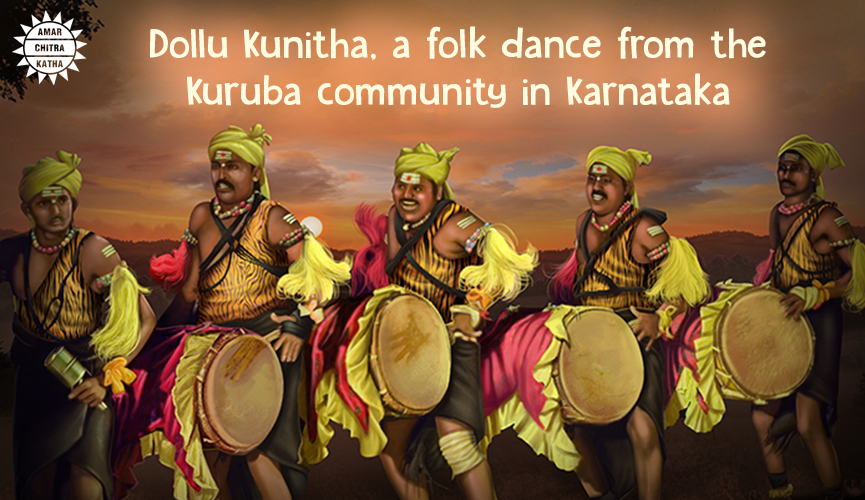By Meghana L
Dollu Kunitha is a folk dance that originated from the Kuruba community in Karnataka. The Kuruba community is traditionally an agrarian and herding community. They live in Karnataka, Tamil Nadu, Andhra Pradesh and Telangana. Dollu and Kunitha mean drum and dance respectively, and are the best descriptions of the art form. Dollu Kunitha is usually performed by 12-16 performers, with one of the members acting as the leader and conducting the rest of the group. The group dances around the performance area in a semi-circle to the beat of the drums and other instruments. Performances often end with a grand finale of a human chain. There are many variations across Dollu Kunitha performances, such as performances involving use of smaller drums, so there is no definite way to describe a performance.

There are several legends about the origin of the dance form. The most well-known talks of a demon named Dollu, a devotee of Shiva, who performed penance to please him. Shiva was pleased with his penance and offered to grant him a boon. Dollu asked Shiva to grant him immortality. When Shiva told Dollu that granting him immortality was impossible, he gave the god an alternative and asked him to allow Dollu to swallow him. Reluctantly, Shiva allowed the demon to ingest him, but decided to punish Dollu. So when he was inside his stomach, he kept increasing in size, causing great pain to him. Dollu then pleaded with Shiva to stop, and so Shiva tore through Dollu’s body and got out. He then used the dead demon’s skin to make a drum and gave it to his followers, who used it to dance in praise of him.
The drums used in the performances are made out of neem or palm trees. Artisans use the bark of these trees to create large hollow drums; the left opening of the drum is covered with goat hide and the right is covered with sheep hide. This large drum is tied to the waist of the performers. Performers use a large stick and their hands to beat the drum in alternate motions. Other instruments used are the thala, jagate, and flute. There are no strict rules about the costumes of the performers. The most commonly seen costumes are tiger-patterned drapes from the upper body to the knees paired with a black dhoti. Women who perform Dollu Kunitha typically wear sarees. The performers also wear anklets to create rhythms while performing.
Although the dance began as part of the religious ceremonies of the Kuruba community, it has evolved to become an important cultural art form that men and women across communities in Karnataka perform.
Learn more about the culture of India with the ACK Comics app!





